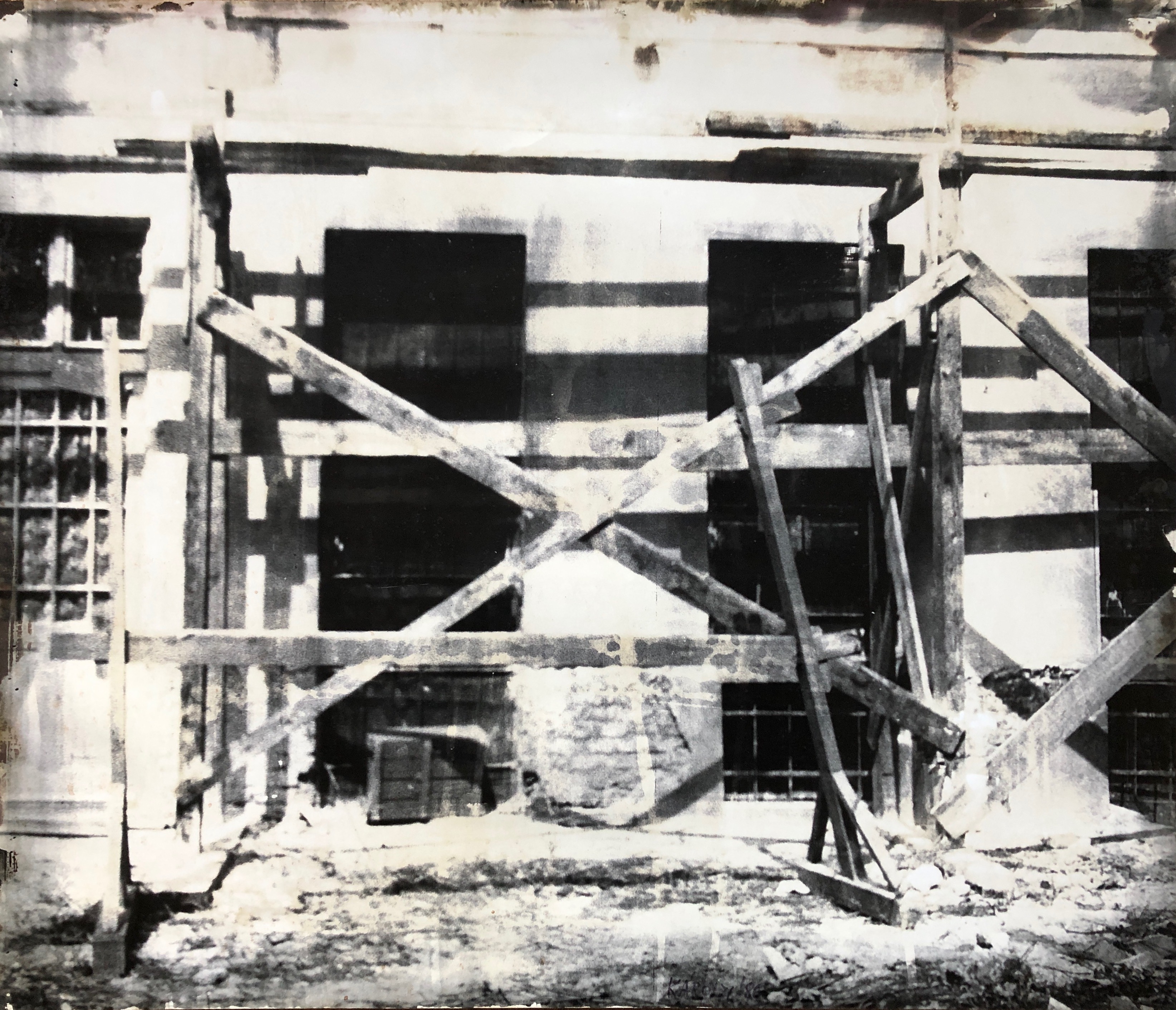

2019.10.11. – 2019.11.11.
Károlyi Zsigmond
Fotófestmények / Photopaintings
"Károlyi Zsigmondnak a nyolcvanas évek elején-közepén festett képei szinte kizárólag a forma formátlanodásáról beszélnek. A motívum – fölállványozott házfal, aládúcolt gang, mész X-ekkel jelölt ablakok – jelentéktelen, mindig azonos, ürügy. Még akár a szociografikus lelki-ismeret-realizmus szigorú mutatóujja is kifigyelmeztethetne belőlük; még akár nosztalgikus tartalmakat is kereshetnénk bennük, ha nem lehetnénk bizonyosak azonnal: nem találunk rájuk. De mit is tehetne korunk (romantikus) elvágyódója? Hová fájhatná vissza magát, hová kívánkozhatna? Hiszen a XVIII. század vége óta „hivatalossá”, stílussá, életszemléletté vált a szenvedelmes visszanézés; a múlt fényében minden jelenidejű értéktelenné, kopárrá szikkadt: mi már csak a talmiság fakó tükrében nézegethetnénk – nem, riadtan vizsgálhatjuk – önnönmagunkat. Abban pedig már semmi sincs, a sóvár tekintetek mindent kiszívtak belőle. Régen... régen jó volt a még régebbire gondolni. Aztán már arra sem." (részlet a megjelenő könyvből)
István Hajdu:
THE REALISM OF ZSIGMOND KÁROLYI 1985-1987
"Almost all the paintings made by Zsigmond Károlyi at the beginning and in the middle of the 80s tell us about forms losing their forms. The main motifs – a scaffolded wall, a shored up porch, windows with X-s painted across them in whitewash – are insignificant, always the same. They are an excuse. Why, we might look for the index finger of sociographic conscience-realism raised at us ever so strictly. We might look for nostalgic elements. Only it would be pointless, as we can be sure such things are absent from the paintings. But what can we do, if we (romantically) yearn nevertheless, in a time like ours? Which epoch can our pain take us to? When is the age we yearn for? Since the end of the 18th century, romantic yearning for the past has been ”approved officially”; indeed it has become a life style. Compared to the glory of the past, the present withers into a valueless, lifeless wasteland. All we can do is behold our own dim reflection - or rather take a frightened look at ourselves - in the mirror of fake beauty. There is nothing in that mirror, the hungry eyes of others sucked up all the images long ago. It used to be so nice... it used to be so nice to think back to even older times. Then even those times lost their appeal." (detail from the published book)
A kötet megjelenését és a kiállítás megvalósulását a Nemzeti Kulturális Alap támogatta.
The publication of this book and the exhibition was suported by the National Cultural Fund (Nemzeti Kulturális Alap).

